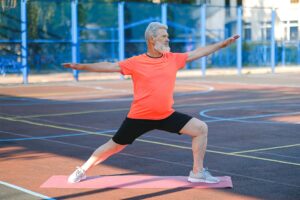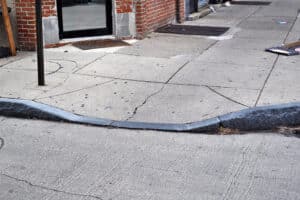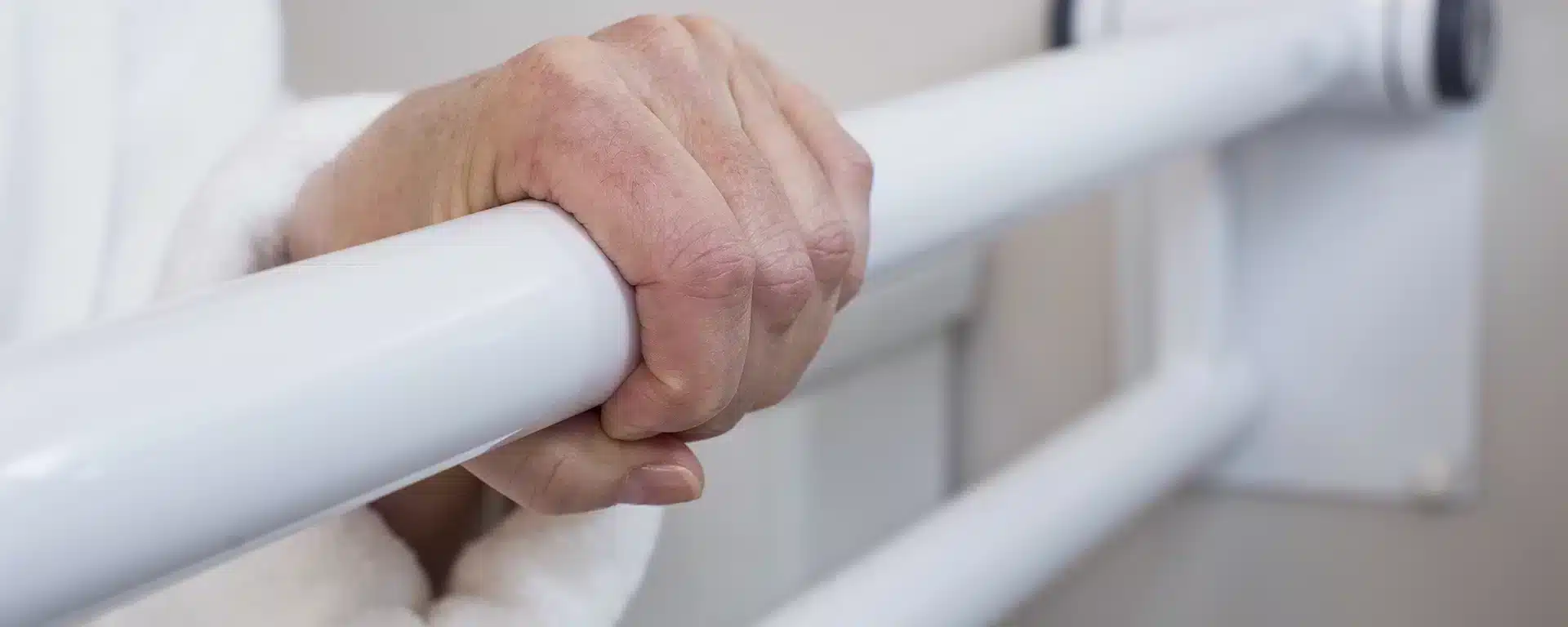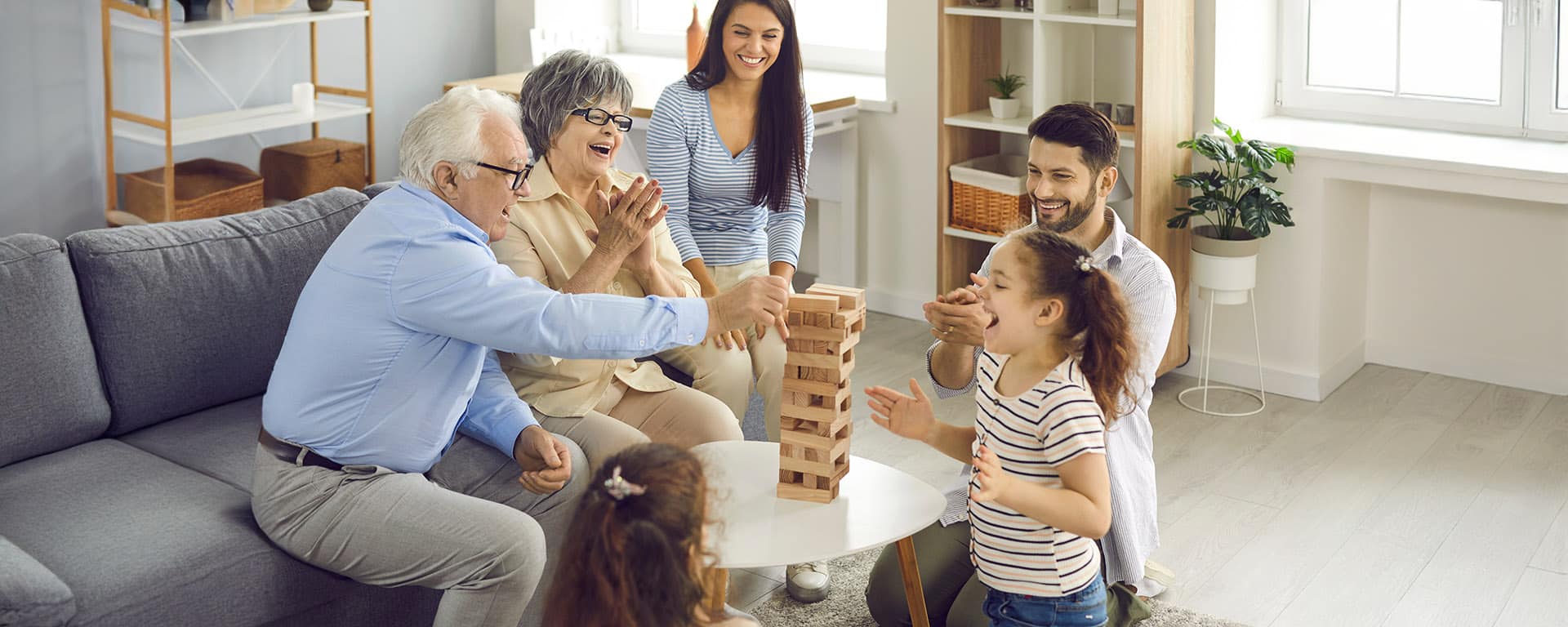The Importance of Universal Design
What is the purpose of this article?
One of our long-term goals at HealthCraft Group is to change the conversation around fall prevention and reduce the stigma of aging, disability, and home safety in general. As both an engineer, occupational therapist, and inclusive design consultant, Rebecca Langbein brings a unique perspective to this critical, ongoing conversation.
A Quick Recap on Universal Design
When executed with care, Universal Design doesn’t just create things for people with disabilities. It makes things that are easier to use and better for everyone.
In practice, Universal Design is about understanding the most extreme user needs at the outset of a project so that the outcome is easily usable by more people. It also means that accommodations don’t need to be tacked on as an afterthought.
According to Ireland’s National Disability Authority (NDA), Universal Design is the design and composition of an environment so that it can be accessed, understood, and used to the greatest extent possible by all people regardless of their age, size, ability, or disability.
To do this well, we need to listen to multiple perspectives.
HealthCraft’s History of Universal Design
Image from this video that tells HealthCraft’s origin story.
Engaging multiple perspectives is part of HealthCraft Group’s DNA. In 1994, our parent company (HealthCraft Products) was co-founded by a medical retailer, an occupational therapist, and a design engineer.
Our founders brought together their unique-but-linked disciplines to prevent falls with innovative products.
Naturally, when we heard about Rebecca Langbein (and saw her TEDx Talk), we knew we had to speak to her.
Rebecca is a Philadelphia-area engineer and occupational therapist who works for The Universal Design Project.
Selfishly, I was excited to talk to someone with perspectives from two of our three founders (what can I say—I’m a big nerd). I was even more thrilled when she agreed to collaborate with us, and sit down with me in the fall of 2020 for an interview:
Q & A with Rebecca Langbein
In this section, Micah’s questions and Rebecca Langbein’s answers will be denoted by MR and RL respectively.
MR: In your own words, what is Universal Design? What are some examples of Universal Design that people might not know about?
RL: To me, Universal Design is a type of design that works for everyone; it’s no better for one person or group than another.
I think sometimes it gets a bad rap as only being for disabilities—and it’s not. If something is truly universally designed, it works for everyone equally.
Photo by Nick-Philly via Wikimedia Commons. Creative commons license.
One example that people might not know about are curb cuts. We all take curb cuts for granted. They make sidewalks easier for everyone; if you’re pushing a stroller, if you’re bringing groceries home, if you’re riding your bike, on a scooter; using a mobility device; a wheelchair, or if you’re someone with short legs like me stepping onto really tall curbs.
MR: You first studied engineering. I’m wondering what drew you to that, what it taught you, and how it brought you towards occupational therapy?
RL: I found a program at Lehigh University called IDEAS (Integrated Degree in Engineering, Arts, and Sciences) where I was able to create a degree that integrated a bunch of different engineering fields with a whole lot of courses in sociology, psychology, and ethics.
In my undergrad, I realized how many people were being excluded from the design and engineering processes, which led me to Occupational Therapy.
My goal was to bridge the gap between the technologies that engineers make, and the people who end up using them who often don’t have any say in that process.
I feel like having sat in the seat of an engineer and a healthcare professional—I have a unique perspective that can help me bring more empathy into design.
MR: What is the Universal Design Project?
RL: The Universal Design Project is a nonprofit organization that seeks to address the severe lack of universally accessible homes in the United States.
The number of individuals with disabilities in the US far outweighs the amount of affordable, universally accessible housing that exists. We work with designers and architects to design floor plans using specific Universal Design Principles.
Next, we take those designs and partner with builders across the country to actually build these homes and, ultimately, increase the number of universally accessible homes across the country.
MR: Wow. I want to pull on this thread a little more. We have accessibility standards for public spaces, and even digital spaces—why do you think the home has been sort of forgotten in this way?
RL: I honestly think—and I could be wrong—because it would be so hard to mandate. It’s hard enough to make public spaces accessible for everyone, you know?
I live just outside of Philadelphia, which is a really old city. When they build new sidewalks, of course, there are curb cuts, but to redesign buildings that are universally accessible on foundations that have been there for hundreds of years is nearly impossible.

Similar to Rebecca’s example of Philadelphia, Montreal, Canada—another old city—includes many multi-unit homes that have stairs at their entrances. Without significant financial investment or better, cheaper elevator technology, it’s unlikely these homes could ever be made universally accessible. Photos by Etienne Delorieux via Unsplash.
Also, I don’t think it’s always been a priority, whereas now, people are tending towards aging in place. They’re living longer and they don’t want to move into nursing homes, so it makes sense that we’re seeing more demand for universally accessible spaces.
MR: Safety products tend to have a reputation for being ugly and clinical. Why do you think that is?
RL: I think that this links back to the idea of designers and engineers not thinking about the people for whom they’re designing.
Photo by Jorge Barrios via Wikimedia Commons. Creative commons license.
I don’t think they typically consider what it would feel like to welcome someone into their home and to have all this ugly, clinical, medical equipment.
I think people are demanding better now. No one wants to live in a space that feels antiseptic. I think people are meeting these things and saying, “I’m not going to use that, that’s not good enough, it can be better.”
And, as we both know, it can be better.

Photo of an accessible bathroom by BuildAble featuring products by Invisia.
There’s no reason that something can’t be functional, safe, and beautiful. I think as more people who use these products speak up and are heard by the people making them—the products will continue to change and get better.
“Yes—safety products have to be safe—but they also have to work for the person using them; a human with feelings, priorities, values, and interests who doesn’t want to live in a hospital.”
MR: What are some common objections you, or OTs in general, hear from patients about safety products?
RL: Obviously, people don’t want to feel old or needy, or like they’re in a hospital—because who would? A lot of people simply don’t want to admit that having a safety product in their home would help them, and that can put them in danger.
There’s no denying we live in an ageist world. We’re taught from the time we’re really little, “enjoy life when you’re young—everything gets worse when you get older!”

Photo by Anna Shvets via Pexels
Even people who are very active and thriving into their old age can be highly stigmatized.
MR: Do you have any “Jedi mind tricks” for convincing patients who are resistant to invest in their safety?

RL: I think that occupational therapists are uniquely positioned to address this because I think it’s a question of quality of life. That’s because we don’t just address someone’s physical needs, but also their values and routines.
Oftentimes, traditional safety products collide with values like independence and autonomy. The truth is, people are much more likely to embrace something that looks like it belongs in their space.
Another thing to remember is that people learn by doing. Say, for instance, I have a patient who struggles to cut their fruit in the morning for breakfast. Maybe one day, they come to our appointment and we’re talking about this issue, and they say “I figured out that if I wrap this hand towel around the handle of my knife, I don’t have to close my hands so tight.”
That’s an adaptation they made, and that can sometimes lead to other things. That could be an opening for me to recommend OXO utensils. I think a lot of the time, convincing a client to try something is more about following their lead.
MR: So, in an emotionally intelligent way, offering a more permanent solution to something they’ve done themselves?
RL: Exactly!
MR: Very cool. I think this comes back to a core challenge of Universal Design, that so many of these solutions that people figure out have to be tailor-made. As a designer or engineer, how do you look past all these individual needs to create truly universal things?
RL: I do agree that is part of the challenge with embracing Universal Design, because, the fact of the matter is, there’s not a single thing in the history of the universe that works for every single person. That’s just not going to happen. We‘re all different—and that’s great.
This kind of loops back to the importance of working together and engaging different perspectives; of asking someone, “would this work for you?”
The question that we always ask ourselves at The Universal Design Project is: if we’re trying to design for the widest variety of people, what would that look like?
Instead of feeling pressure that it has to work for every single person, we try to think about casting the widest net possible. Then we ask ourselves: Who are we including? Who are we excluding? How can we make that net wider?








